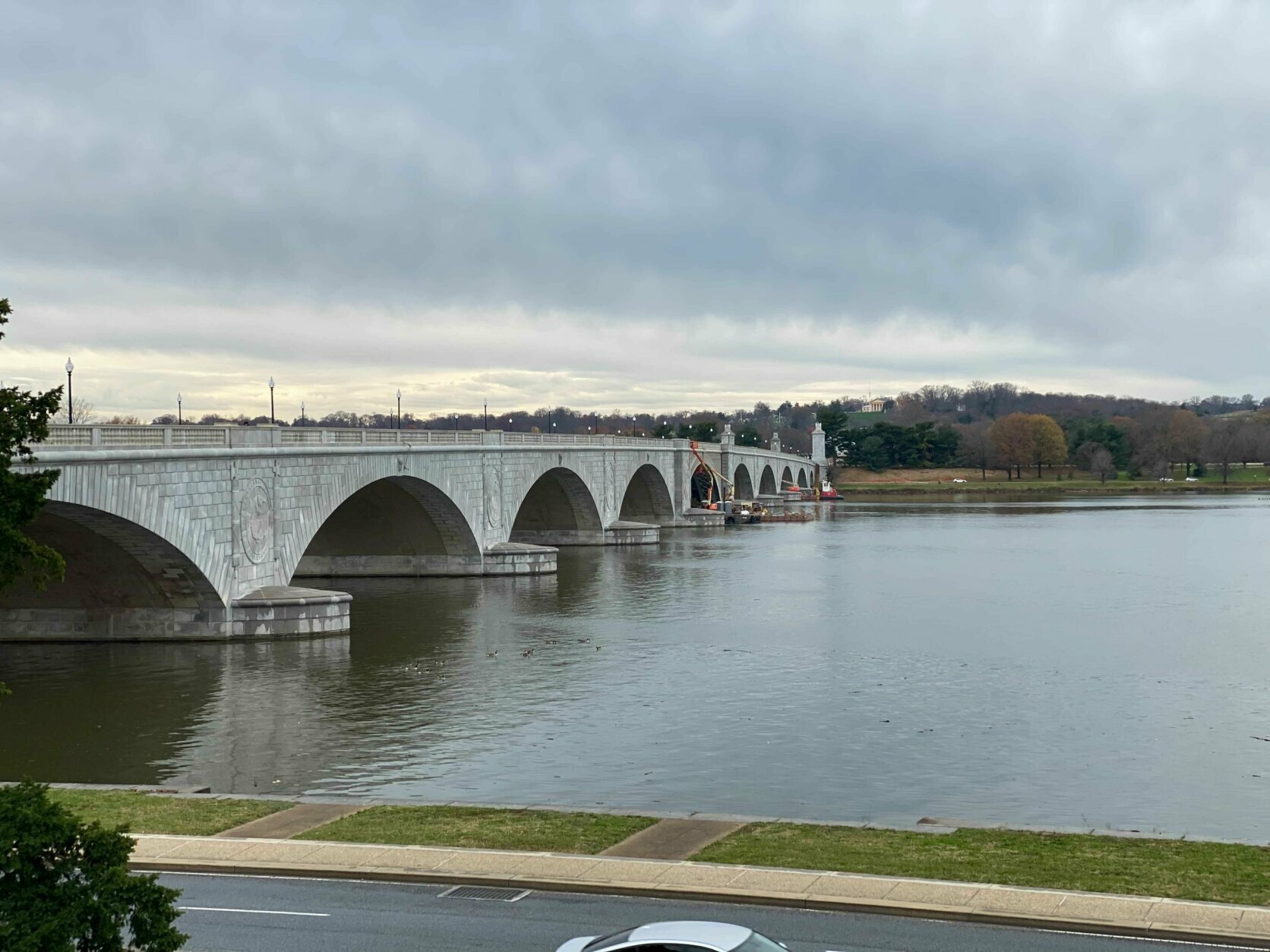
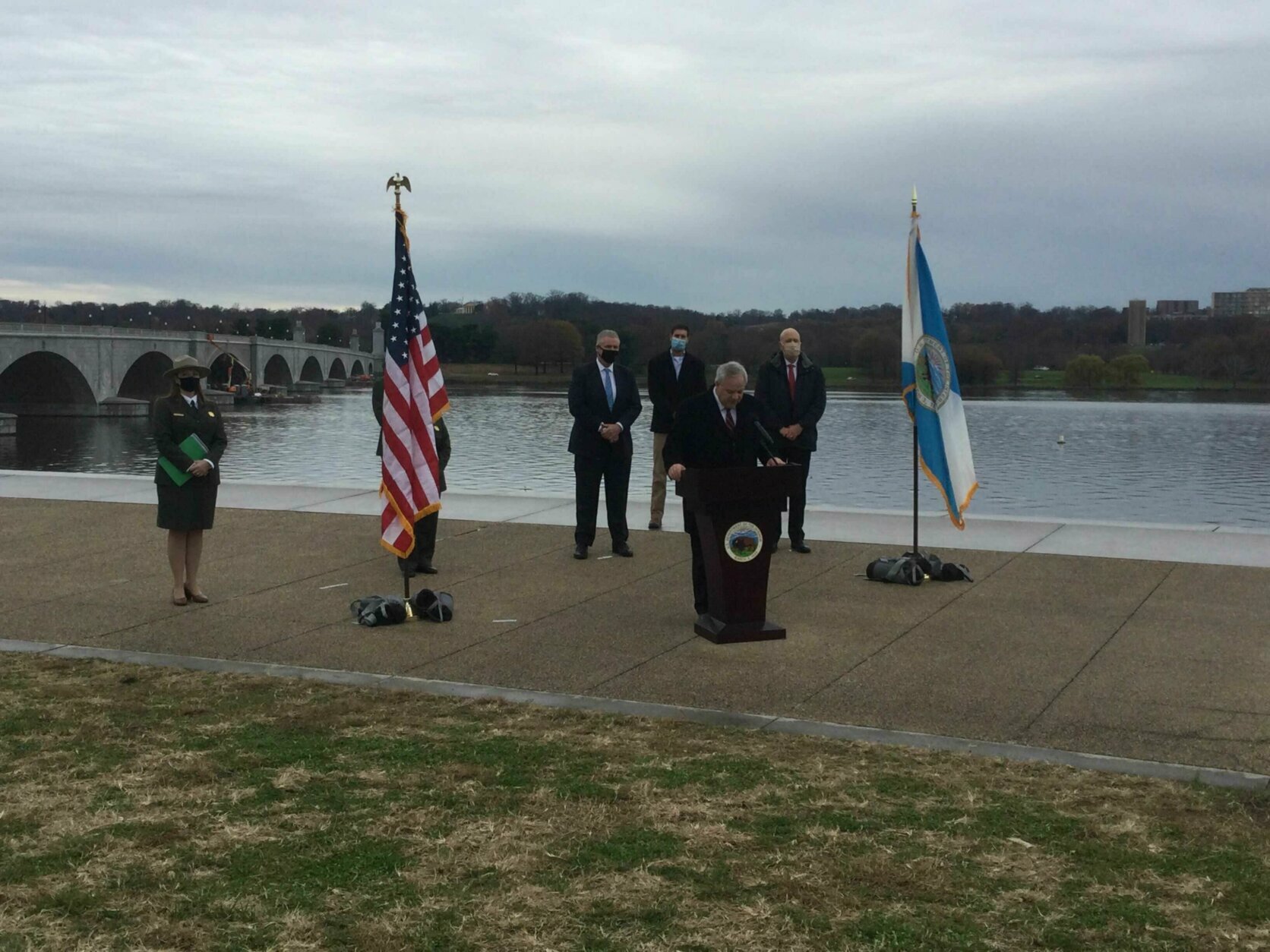
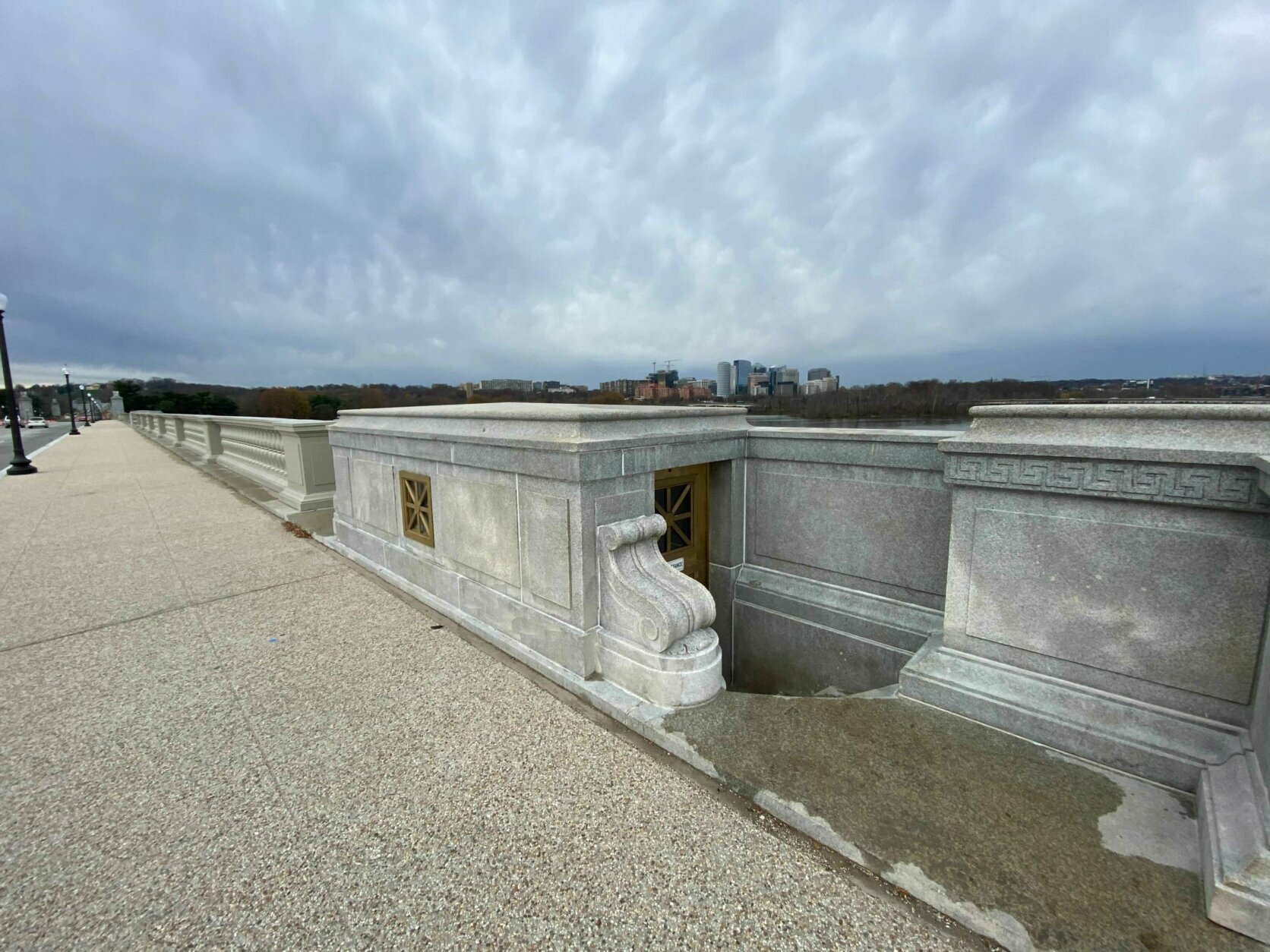
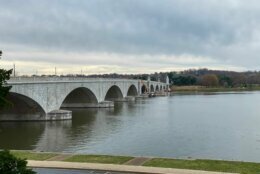
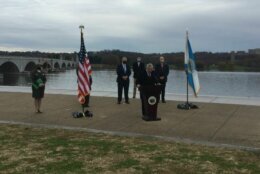
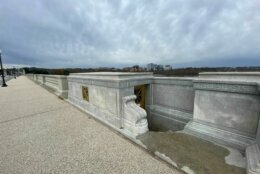
After two years, construction on the Arlington Memorial Bridge is over. Work cones were removed around noon Friday, and all six lanes and both sidewalks opened for use.
U.S. Secretary of the Interior David Bernhardt asked a small crowd during the bridge’s reopening ceremony, “How many of you have seen an inconvenience of not being able to utilize all the lanes of the Memorial Bridge?”
The crowd overwhelmingly rose their hand and likely agreed with most drivers who spend time in both Virginia and D.C.
The $227 million renovation project was undertaken by both the National Park Service and Federal Highway Administration to rehabilitate the 88-year-old bridge, the first complete rehab in its history.
When the project began in fall 2018, engineers estimated that the bridge would need to close by 2021 if no renovations occurred. Now, the bridge has added 75 years to its life span, according to Bernhardt.
“The project has been a success; it has come in on on-time and on-budget,” Bernhardt said.
U.S. Sen. Mark Warner, D-Va., also lauded the bridge’s reopening. In a statement Friday, Warner said, “Today’s reopening is a testament to years of work by the region’s congressional delegation, our local partners and the National Park Service. Commuters can now rest easy knowing that this nearly 90-year-old landmark will carry them safely over the Potomac for years to come.”
During the two-year restoration of the bridge, the iconic granite work along the bridge that can be admired from the Watergate Steps was refurbished. All of the bridge’s supports were replaced, as well as the driving deck.
The bridge’s middle section also saw major renovations.
Between the 4,500 pieces of historic granite is a draw span — Arlington Memorial was originally a draw bridge that would open for passing ships, but with the addition of many other bridges on the Potomac River that did not have draw spans, the feature became obsolete.
During renovations, crews took out the machinery but refurbished the original look of the draw span.
But the bridge is more than just a way of traversing the Potomac.
“It is more than just a bridge; it is a monument to our veterans that connects the Lincoln Memorial to Arlington House,” Bernhardt said. “It is a symbol of a country brought back together after the Civil War.”
It was designed as a way to link the North and South nearly 70 years after the Civil War.
Jonathan Shafer with the National Park Service told WTOP that the original construction of the bridge was also symbolic. Steel from Pennsylvania was used as a contribution from the North, and granite from North Carolina as a contribution from the South.
“It really is the ceremonial entrance to our nation’s capital,” Shafer said.








